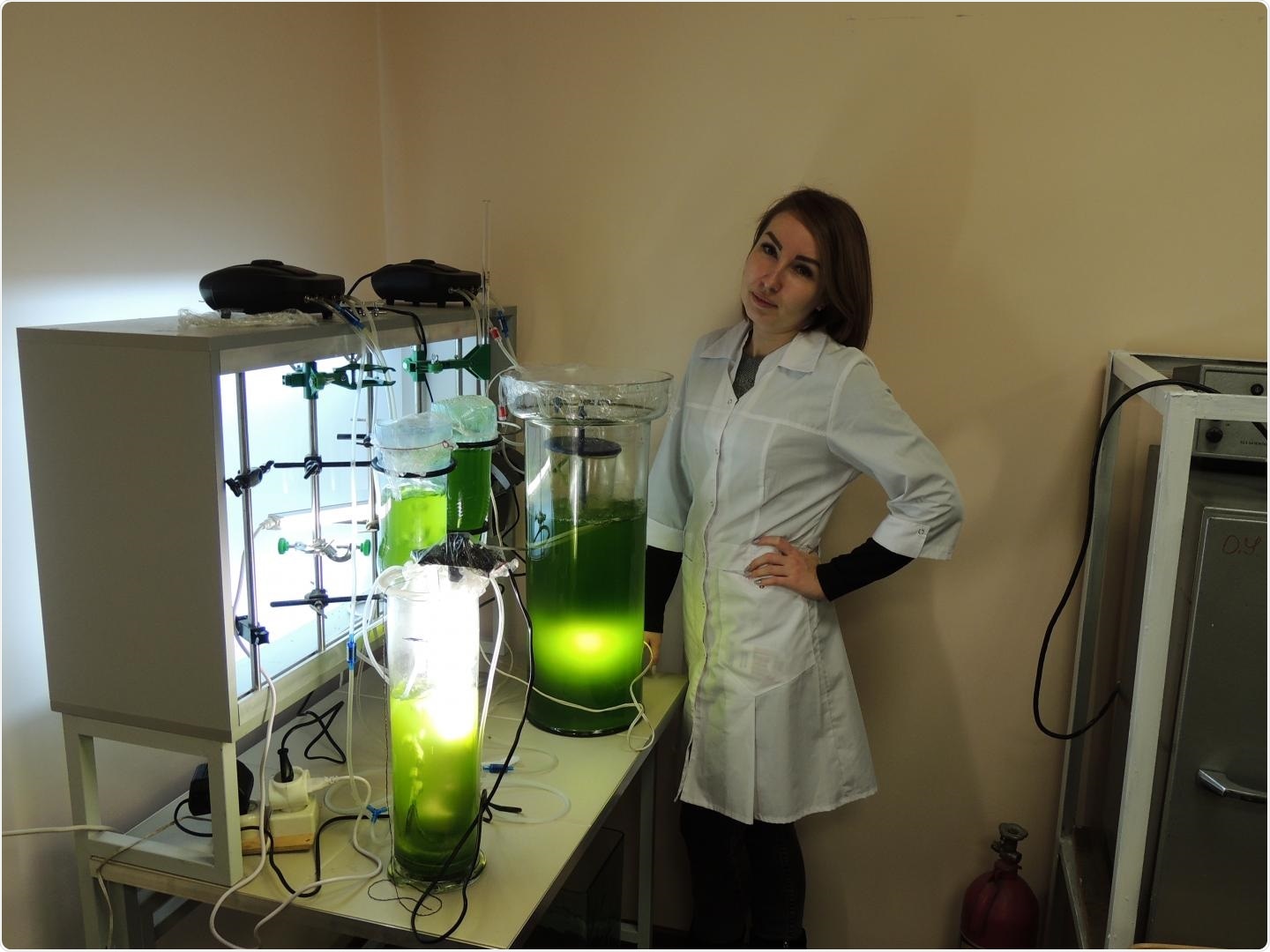Scientists from Peter the Great St. Petersburg Polytechnic University (SPbPU) have successfully produced microalgae biomass that has a high content of carotenoid pigments, which is suitable for the food sector. This breakthrough was achieved within the framework of the chlorella microalgae cultivation process.

Researchers from Peter the Great St. Petersburg Polytechnic University (SPbPU) obtained microalgae biomass with a high content of carotenoid pigments. Image Credit: Peter the Great St.Petersburg Polytechnic University.
The study results were published in the scientific journal, Agronomy Research, in November 2020.
The industrialization of the food industries and the loss of the ecological condition of urban areas make it essential to further enrich the diet with biologically useful food substances. Pigments such as carotenoids, from which vitamin A is produced in the body, are important for human health.
But it is hard to extract carotenoids from natural sources, because it is damaged by extreme temperatures, high environmental acidity, and irradiation sources. It is, therefore, important to design technology for the targeted delivery of carotenoids to the cells.
The obtained biomass with a high level of carotenoids can be used in various sectors of the food and pharmaceutical industries as a dietary supplement to reduce the vitamin A deficiency for children and adults living in regions with increased environmental stress, and also to prevent the risk of oncological diseases.”
Yulia Bazarnova, Director, Higher School of Biotechnology and Food Technologies, Institute of Biomedical Systems and Biotechnology, Peter the Great St.Petersburg Polytechnic University
To enhance the biosynthesis of carotenoids, researchers from the Polytechnic University have designed the conditions of illumination of the cell suspension of microalgae, the consistency of the nutrient substrate, and selected the techniques of concentration and dehydration of the resultant biomass.
In addition, the team is creating microencapsulated forms of carotenoids for selective delivery to different tissues and organs. Microencapsulated carotenoids are essentially particles made up of a core (Chlorella microalgae carotenoid extract) shell (biodegradable material).
At present, researchers are actively negotiating with Russia’s leading producer of bottled vegetable oils regarding the use of the novel technology in the nutrition sector.
Biological and nutrition technologies are one of the key scientific areas of the 21st century. Scientists all around the world are working to improve and preserve human health. The projects of the Higher School of Biotechnology and Food Technologies SPbPU are very important and promising. The scientific developments in this area lead to the gradual improvement in the quality of life.”
Vitaliy Sergeev, Vice-rector for Research, Peter the Great St.Petersburg Polytechnic University
Source:
Journal reference:
Bazarnova, J., et al. (2020) A method for obtaining plastid pigments from the biomass of Chlorella microalgae. Agronomy Research. doi.org/10.15159/ar.20.175.